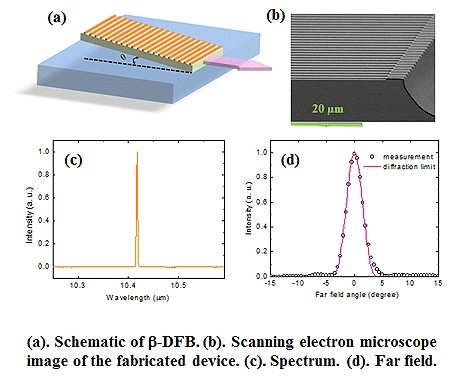According to the university, infrared radiation in the range of 8–12 microns is of interest for military and industrial use equally, as almost all chemicals — including nerve gases and toxic industrial chemicals — can be identified by infrared absorption in this range. In addition, the atmosphere is relatively transparent in this wavelength range, which enables sensing from a distance.
Stand-off sensing applications, however, require that laser sources be high powered and single mode, and possess good beam quality. Incorporating all three qualities in a single device presents a significant challenge, and many sophisticated structures are said to have been proposed with little success.
Manijeh Razeghi, the Walter P Murphy professor of electrical engineering and computer science in the McCormick School of Engineering and Applied Science, and her group have created a new laser technology that controls both wavelength and beam quality.
The feat is achieved through the use of a new type of distributed feedback mechanism called Β-DFB, a simple diffractive feedback in an angled laser cavity.
‘Our resonator is the most promising device for creating high-power, single-mode laser sources with good beam quality and it is inexpensive and can be realised at room temperature,’ said Razeghi, who leads the Center for Quantum Devices (CQD). ‘Furthermore, the design can be applied to a wide range of semiconductor lasers at any wavelength.’
Razeghi and her group demonstrated more than 6W of peak power with nearly diffraction-limited beam quality at a wavelength of 10.4 microns — the highest-power single-mode semiconductor laser demonstrated at a wavelength greater than 10 microns.
Refinement of the design, particularly related to the optimisation of the laser cavity design and improvement of the gain medium, is expected to increase the output power significantly.
The development of the Β-DFB is complementary to active research efforts within CQD, but is not yet directly funded.
A paper describing the findings, titled ‘Angled Cavity Broad Area Quantum Cascade Lasers’, was published on 21 August in the journal Applied Physics Letters.






Swiss geoengineering start-up targets methane removal
No mention whatsoever about the effect of increased methane levels/iron chloride in the ocean on the pH and chemical properties of the ocean - are we...